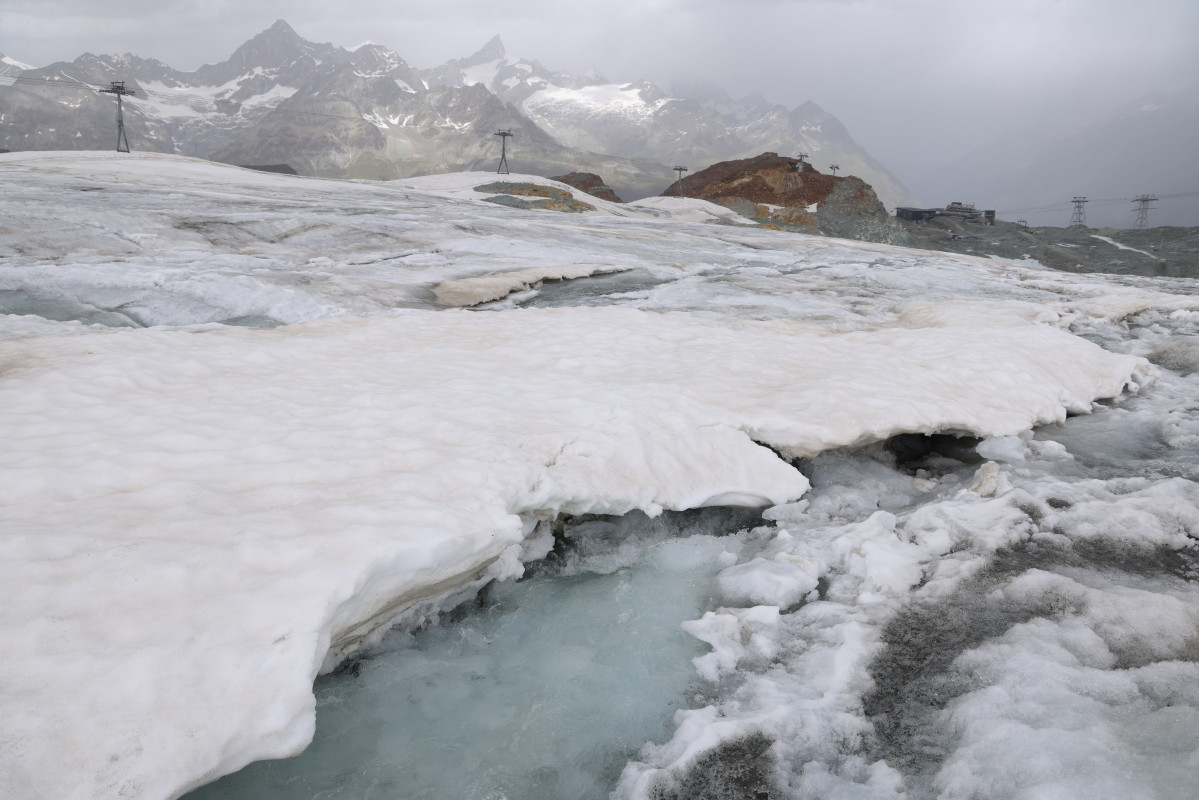No products in the cart.
Fitness Tips
Experts Believe This Hiker's Remains Could Be Hundreds of Years Old

One of the inadvertent effects of the blistering cold in dangerous hiking areas like Mount Everest is that human bodies are usually preserved for much longer, leaving people who discover the remains to learn more about the deceased. It turns out that that preservation is so good it’s teaching scientists about a traveler who died possibly hundreds of years ago.
In 1984, a hiker was traversing Theodul Glacier in the Swiss Alps when he stumbled upon a person’s remains sticking out from the ice. Over the next few years, scientists continued to return to the site as more of the glacier began to melt and more of the body began sticking out, such as a skull with auburn hair on it and various items like knives, coins, jewelry, glass buttons, a shaving razor, a dagger, a sword, and a pistol all scattered nearby.
Researchers have been able to draw some conclusions about who the traveler was based on what he was found with. Pierre-Yves Nicod, a curator at the Valais History Museum in the alpine town of Sion, explained to Business Insider that this particular subject’s status can possibly be determined by what he was carrying. He was first believed to be a soldier, but now it doesn’t appear that way.
“They’re not combat weapons. These are fencing weapons. These are ceremonial weapons that the rich had on them,” Nicod said. “And then the clothes are not combat clothes. They are also the clothes of a wealthy person, of a gentleman.” The lack of signs of trauma imply that the man possibly died by accident. The items he had with him can be traced to approximately 1600 C.E.
In the thousands of years after the last Ice Age, melting ice has revealed things like mummified mammoths and squirrels as well as ancient human artifacts like skis and arrows. This has all become part of the new scientific field of glacial archaeology. The Swiss Alps are a great place to look for things like these, though it remains difficult to pin many finds to an exact time frame.
“It’s one of the difficulties of glacial archaeology that we find these objects in the ice, and therefore out of all archaeological context,” Nicod said.
Nicod and archaeologist Philippe Curdy published some of their theories in a 2022 report. As for how they determined the century the frozen traveler came from, they cited a 1643 illustration depicting a caravan of merchants climbing to an Alps mountain pass.
“In the background, there are the mountains and then a merchant with all these loads who has his mules, who’s climbing up to the peaks,” Nicod said. Interestingly, the remains of two mules were also found near the Theodul traveler. Nicod noted that the man in the drawing “has the same type of clothes with the same type of buttons and the same sword.”
Traversing mountain passes, especially to sell your wares in other towns, was a common practice for hundreds of years. Local archeologist Romain Andenmatten explained to Business Insider that they really had no other options in those days.
“We see that the passage over the glacier was used all the time—Bronze Age, Iron Age, Roman time,” he said. “The simplest way is to go over the glacier.”
It turns out the adage that every frozen corpse on Mount Everest was once a highly motivated person can apply to other frigid parts of the world too.
Source link

